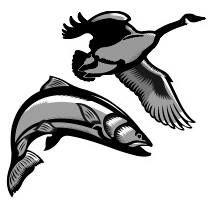



We may earn revenue from the products available on this page and participate in affiliate programs. Learn more ›
Why learn how to tie a Palomar knot? Because it is the most widely useful—and easiest—of all terminal knots used in freshwater and inshore saltwater fishing. It works well with both nylon monofilaments and braid. When you’re tying on a hook, swivel, snap, or most lures, the Palomar knot is less complicated and usually stronger than the more common improved clinch knot.
So let’s get right to it. Here is a simple video and, below, written step-by-step instructions with illustrations for how to tie a Palomar knot.
Extend about 6 inches of doubled line through the hook or lure eye, making sure the tag end of the line doesn’t pass through. It should look like the illustration below.

Tie a loose overhand knot using the doubled line on either side of the eye. The hook itself will hang from the middle of the knot, as shown here.

Pass the loop all the way over the hook (or snap or lure).

Lubricate the knot with saliva, then pull on the doubled line (but not the loop) to tighten. Alternatively, you can pull first on the standing line and then the tag end. Once it’s tight, trim closely with sharp clippers. And there you have it, a finished Palomar knot, in all its glory.


